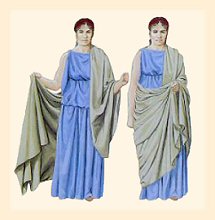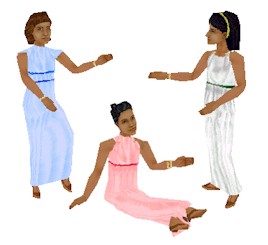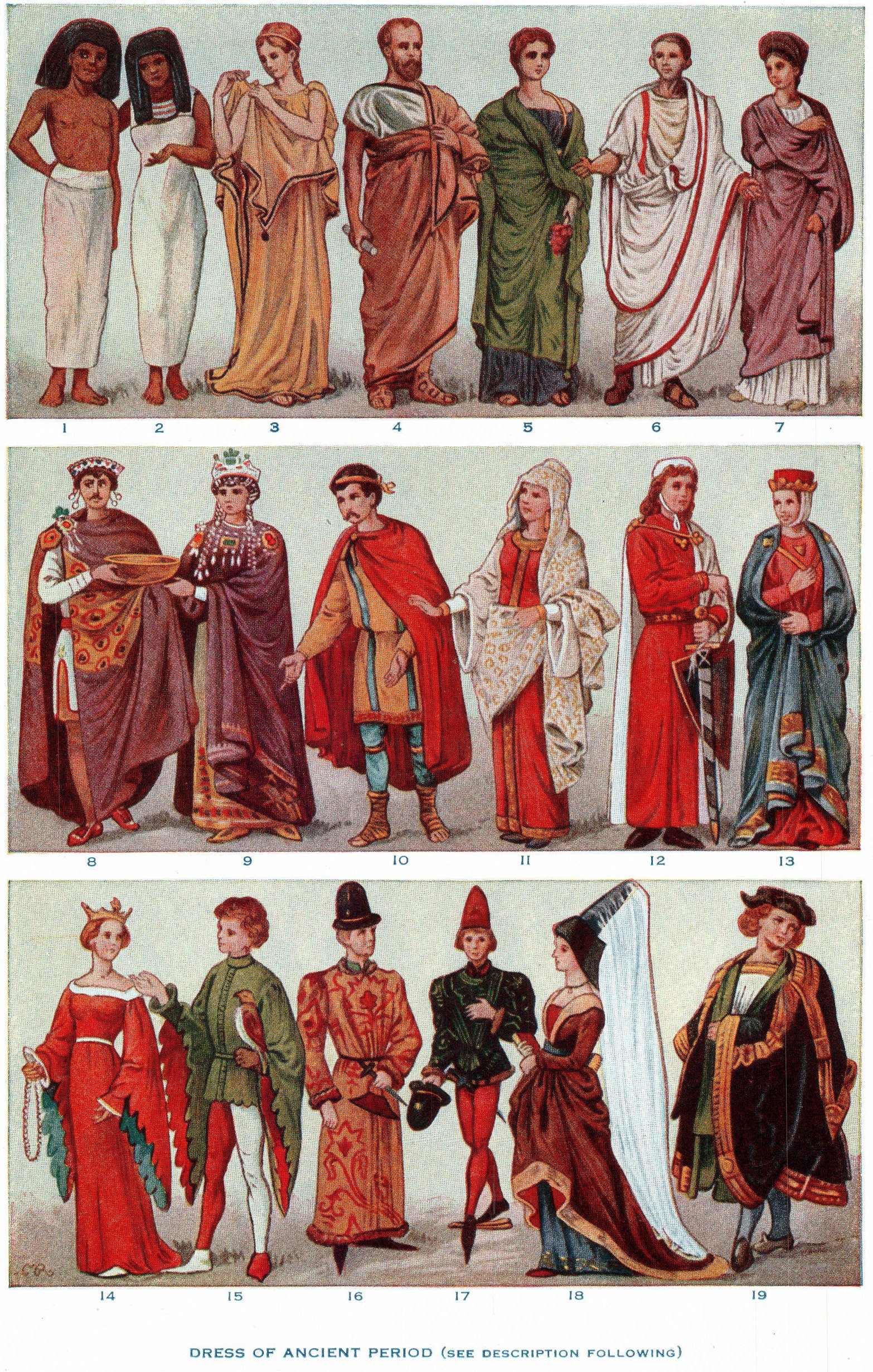Ancient Roman clothing/ Ancient Roman Garments owed much to that of ancient Greece.
Ancient Roman Tunic
Roman men generally wore two garments, the tunica, and the toga. The tunica was a short woolen undergarment with short sleeves. The male tunic would generally reach roughly to the knees. By contrast, to wear a long tunic with long sleeves was considered effeminate and was generally avoided by society as a whole.

Ancient Roman Toga
Basically, the toga was a large blanket, draped over the body, leaving one arm free. As the toga was specifically meant as a public display Roman Garments, the tunica was also worn by many people within the comforts of their own homes. The toga was made of wool.
The rich had the luxury of choice of what kind of wool they sought to wear. Of Italian wares, the wool of Apulia and Tarentum were deemed the best. Meanwhile, wool from Attica, Laconica, Miletus, Laodicea, and Baetica was deemed of the finest quality of all.

Roman dress differed from one class to another. The tunic was worn by plebians (common people), herdsmen and slaves were made from a coarse dark material. The tunic worn by patricians was made from white wool or linen. Magistrates wore the tunic angusticlavia, and senators wore a tunic with broad strips, tunica laticlavia. Military tunics were shorter than those worn by civilians.
Ancient Roman women’s clothing
Roman women also wore tunica in much the same fashion as the men. Women’s tunics would generally be longer, some reaching to the ground. Female tunics often also had long sleeves.
There were two types, both adapted from Greek fashion. One, the peplos was made from two rectangular pieces of cloth partially sewn together on both sides with the open sections at the top folded down in the front and back.
Roman Clothing facts
It was pulled over the head and fastened with two large pins, forming a sleeveless dress. A belt was then tied over or under the folds. The more common tunic worn by women was similar to the Greek chiton.

Roman Stola
This sleeved garment was made from two wide pieces of cloth sewn together near the top. Married women were required to wear the loose, toga equivalent, stola. It was essentially a long tunic reaching to the ground. If could have long or short sleeves, or be entirely sleeveless.

The stola was generally worn over another long tunic, the tunica interior. This long sleeveless tunic was strapped at the shoulder, gathered in and girdled at the waist with the garment extending to the feet.
Ancient Roman Garments
Children wore an amulet called the bulla. Boys would wear it until reaching their manhood, usually around the age of sixteen. Girls would wear it until they married.

Any stitching or sewing was kept to a minimum.This of course also ruled out buttonholes and meant that any kind of clothing was held together either with fastenings such as broaches or clasps.
More info on- Roman soldiers wear, Women’s cloth, Men’s Clothing, Roman Child Cloth, Slaves Clothing




